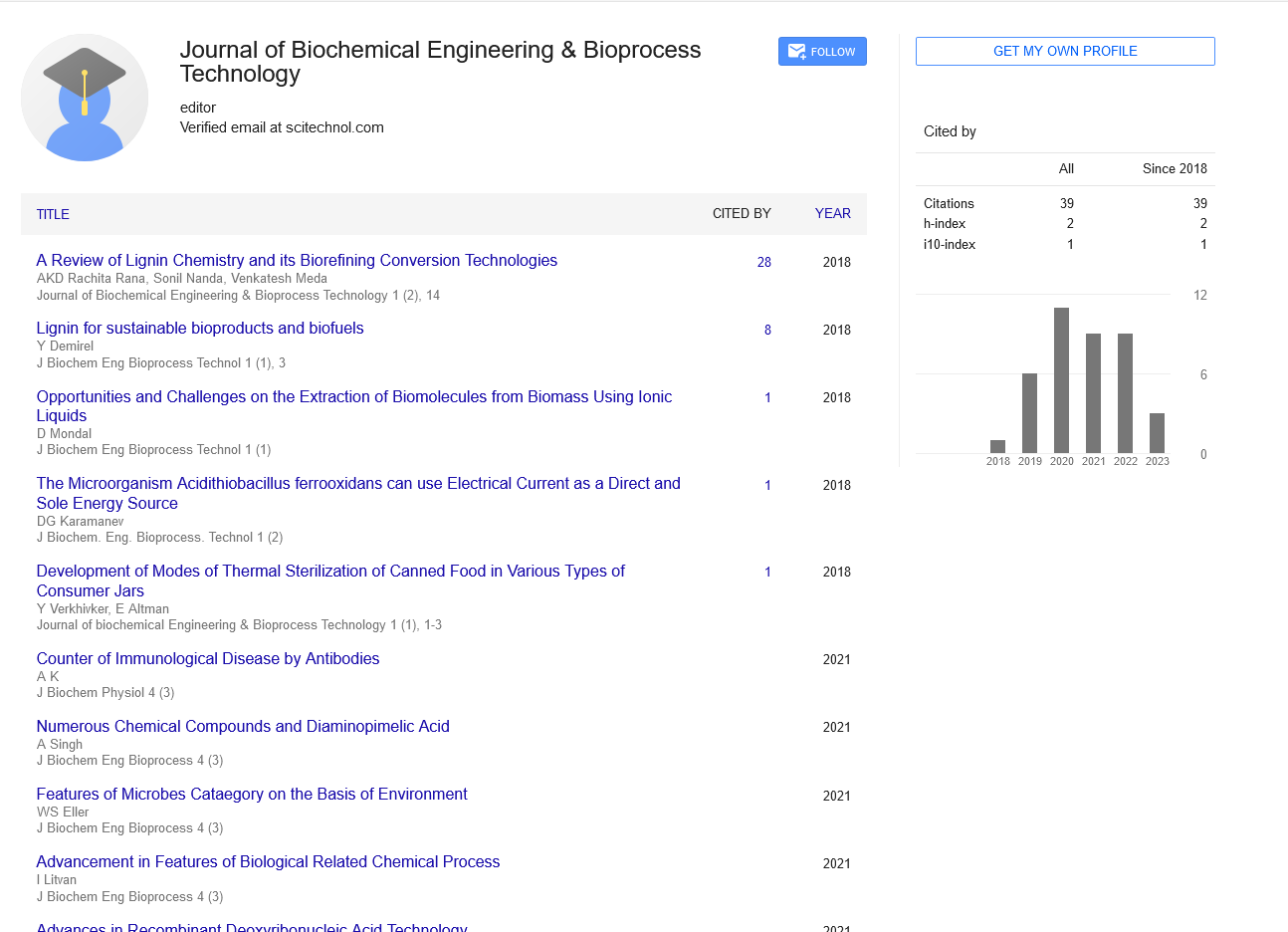Opinion Article, J Biochem Eng Bioprocess Vol: 6 Issue: 1
Genetics and Protein Engineering: Advancements and Applications
Hamachi S*
Department of Health Sciences, Qatar University, Doha, Qatar
*Corresponding Author: Hamachi S
Department of Health Sciences
Qatar University, Doha, Qatar
E-mail: hamachi4@gmail.com
Received date: 22 February, 2023, Manuscript No. JBEBT-23-93174;
Editor assigned date: 27 February, 2023, Pre QC No. JBEBT-23-93174(PQ);
Reviewed date: 14 March, 2023, QC No. JBEBT-23-93174;
Revised date: 21 March, 2023, Manuscript No: JBEBT-23-93174(R);
Published date: 28 March, 2023, DOI: 10.35248/jbebt.1000051
Citation: Hamachi S (2023) Genetics and Protein Engineering: Advancements and Applications. J Biochem Eng Bioprocess 6:1.
Description
Genetics and protein engineering have revolutionized the field of biotechnology by enabling the manipulation and modification of genetic material and proteins. This manuscript provides an overview of the advancements and applications of genetics and protein engineering, including genetic engineering techniques such as CRISPR-Cas9, protein engineering methods such as directed evolution, and the application of these techniques in medicine, agriculture, and industry. Genetics and protein engineering are two complementary fields that have opened up new possibilities in biotechnology. Genetics involves the study of genes, genetic variation, and heredity, while protein engineering is the manipulation and modification of proteins for specific purposes. In recent years, there have been significant advancements in both fields, which have led to the development of new techniques and applications.
The development of CRISPR-Cas9 technology has revolutionized genetic engineering. CRISPR-Cas9 is a powerful gene editing tool that allows scientists to make precise changes to the DNA sequence of an organism. This technique has been used to produce the Genetically Modified Organisms (GMOs) for agriculture, as well as to develop new therapies for genetic diseases. Another significant advancement in genetics is the development of gene therapy. Gene therapy involves the insertion, deletion, or modification of genes within an individual's cells to treat or cure a disease. This technique has shown promising results in the treatment of inherited genetic disorders such as sickle cell anemia and cystic fibrosis. Protein engineering has also seen significant advancements in recent years. One of the most widely used methods of protein engineering is directed evolution. This technique involves the random mutation of a protein's DNA sequence followed by selection of the mutant proteins with desired properties. Directed evolution has been used to create enzymes with increased activity, stability, and specificity. Another protein engineering technique is rational design, which involves the targeted modification of a protein's amino acid sequence based on its structure and function. This approach has been used to engineer proteins with improved stability, solubility, and catalytic activity.
The advancements in genetics and protein engineering have led to numerous applications in medicine, agriculture, and industry. In medicine, gene therapy has the potential to cure genetic diseases that were once considered incurable. Additionally, Genetically Modified Organisms (GMOs) have been created for agriculture to increase crop yields and enhance resistance to pests and diseases. In the field of industry, protein engineering has been used to create enzymes for use in the production of biofuels, pharmaceuticals, and industrial chemicals. These engineered enzymes are often more efficient and cost-effective than their natural counterparts.
Genetics and protein engineering are two rapidly evolving fields that have revolutionized biotechnology. The development of CRISPRCas9 technology and gene therapy has the potential to cure genetic diseases, while directed evolution and rational design have enabled the creation of new and improved proteins. The applications of these techniques are far-reaching, from agriculture to industry and medicine. As research in these fields continues, it is likely that even more innovative and exciting developments will emerge.
 Spanish
Spanish  Chinese
Chinese  Russian
Russian  German
German  French
French  Japanese
Japanese  Portuguese
Portuguese  Hindi
Hindi 